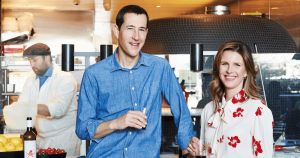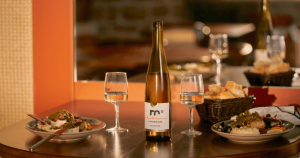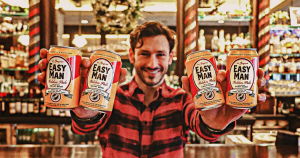In Part 1 of our series on importing non-alcoholic drinks into the US, we covered an overview of the US regulatory environment, product labeling, food quality and safety standards, intellectual property, and more. Read that article here: US importing considerations for ex-US brands
For Part 2, we wanted to get an expert perspective from an importer himself. So we spoke with Thierry Jean, one of the best in the business.
Entering the US beverage market is no small feat, especially when it comes to non-alcoholic options. As the founder of Beverage Lo-No Distribution, Inc., the largest non-alcoholic premium beverage importer and distributor in North America, Thierry was able to provide an insider’s perspective.
Incorporating insights from our conversation with Thierry, this article aims to provide a brief primer on considerations for successfully breaking into the US non-alcoholic beverage market as a foreign brand.
Sales Channels
First things first, Thierry says it’s important that brand owners understand the different channels in order to pick the right partners. Every importer/distributor has different strength areas.
- eCommerce: key to showcasing an unknown/imported brand. Buyers who search for the product online can discover it on Amazon and other eCommerce platforms. Amazon is complicated and often will not generate profits and may actually lose money in the short term.
- Retail: This too is complicated as most retailers will ask for a distributor or direct store delivery (DSD) service. In addition, large retailers have scheduled times in the year called category reviews, during which they consider onboarding new SKUs. Getting in front of them at the right time can be very challenging if there is no existing relationship. To avoid this, find a partner with retail experience or that works with brokers.
- Foodservice: While this channel provides the best exposure for the brand, it is very training intensive for the hospitality staff. Getting into large accounts is very complicated and often requires a bidding process and going through a buying club.
While none of these sales channels are more challenging overall than the others, they each have different scaling opportunities tied with different profit and go-to market profiles.
What most European exporters underestimate is the proper distribution timing and cost as well as the marketing efforts needed to make their brand noticeable.
Pathways to the US Market
Broadly, brands can enter the US market through various means:
- Specialized Importing and Distribution: Companies like Beverage Lo-No Distribution offer specialized services tailored to non-alc brands.
- Big Distribution Companies: Traditional import + distribution firms like Park Street, Republic National Distributing Company (RNDC), and Southern Glazer offer larger scale distribution, but don’t focus on non-alc.
- Direct Retail Channels: Brands can directly approach major retail chains like Total Wine, etc. and bypass the need for an importer altogether.
Traditional Routes: What to Expect
Should you choose a traditional route, particularly with a focus on retail, prepare for:
- Sales Threshold: A minimum of 3-5 units sold per store, per week for 3 months. Not clearing this threshold likely means getting de-listed.
- Category Review Dates: As mentioned above, new brands typically have to go through a formal review process before gaining shelf space. Retail chain category review schedules may or may not align with a brand’s preferred timing.
The Unique Value Proposition of Bev Lo-No Dist
A few things differentiate Bev Lo-No Dist from other importers/distributors:
Holistic Service Range
From DTC fulfillment to distribution to bottle shops to sales to distributors, they cover it all.
End-to-End Solution
Bev Lo-No Dist takes care of everything from in-country pallet pickup to final customer delivery.
Multiple Sales Channels
Their brands are available on Amazon, through retailers, foodservice operators, and various online shops.
Quality Over Quantity
Bev Lo-No Dist only stocks award-winning brands that have mastered the dealcoholization process. These products not only offer the authentic taste of wine, beer, and spirits but do so with no alcohol content. The company is committed to offering healthier options that have fewer calories than traditional sodas and alcoholic beverages.
Customization is Key
One of Bev Lo-No Dist’s strengths is their adaptability. They work with trade partners to develop a unique pricing and distribution strategy that caters to their specific industry and customer base.
Working with New Brands
Bev Lo-No Dist is very selective, but they are sometimes open to new collaborations given certain conditions:
- Existing Demand: Brand has demonstrated that there is already US demand in anticipation of their arrival.
- Consignment Basis: Brands willing to ship on consignment stand to benefit from this partnership more quickly.
- Endorsements: A recommendation from a trusted source within the industry can push a brand up the queue.
In part 3 of Dry Atlas’ series on importing, Jane McKay of Astute Ideas sheds light on the often overlooked financial challenges and strategic planning necessary for a successful market entry. Read it here: Non-Alc Importing Part 3: Navigating Costs and Cash Flow: A Strategic Guide for Importing Non-Alcoholic Beverages into the U.S.
For more from Douglas, follow him on LinkedIn.
Dry Atlas is a media company focused on alcohol alternatives. We deliver non-alc insights, news, and recs to over five million people annually. To stay up to date on all things non-alc, subscribe to our weekly newsletter and view our offerings for brands.






